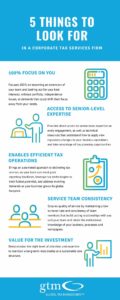Interest Expense Limitation and the New I.R.C. § 163(j): Not Just a Foreign Concept Anymore Interest Expense Limitation New I.R.C. § 163j
By Raymond Wynman and Andrew Wai
Interest Expense Limitation New I.R.C. § 163j
The Tax Cuts and Jobs Act (“H.R.-1”), includes an expanded, broadly-applicable, interest expense limitation in revised I.R.C. § 163(j) (“revised 163(j)”) which is concerning to many of our clients. In this continuation of GTM’s tax reform series, we review the background to § 163(j), describe the provision, and review some of the tax accounting considerations. The I.R.S. has identified providing “computational, definitional, and other guidance” on revised 163(j) as a priority,[1] so continue to follow this series to stay up-to-date with changes as they arrive.
Background on Interest Limitation
H.R.-1 is not Congress’s first attempt at limiting erosion of the U.S. tax base through “excess” interest deductions. Before 1989, the I.R.S. occasionally wielded the thin-capitalization rules of § 385 to recharacterize debt of highly leveraged companies to equity, denying the associated interest expense deduction. The Omnibus Budget Reconciliation Act of 1989 included § 163(j) (“former 163(j)”), which disallowed excess interest expense paid to tax exempt related persons.
A few features from former 163(j) should be kept in mind when discussing the newly enacted interest limitation.[2] Former 163(j) denied deductions for disqualified interest, defined as interest paid to a related party if no U.S. tax was imposed on the corresponding interest income. The limitation did not apply if the U.S. corporation had a debt-to-equity ratio less than 1.5 or had net interest expense less than 50% of adjusted taxable income. A carryover mechanism was available to carry forward excess interest expense or excess limitation to succeeding tax years. Effectively, former 163(j) applied mostly to U.S. subsidiaries of foreign-headquartered companies which borrow from their foreign parents. Clients not meeting this profile largely did not have to concern themselves with former 163(j) and did not perform the associated calculations for tax compliance or provision purposes.
In a worldwide context, interest limitations have become a considerable component of efforts by individual countries and multilateral initiatives to combat base erosion. In its 2008 business tax reform, Germany instituted a 30%-of-EBITDA interest barrier rule, which served as a model for the fixed interest ratio in Action 4 of the Base Erosion and Profit Shifting (“BEPS”) initiative of the Organization for Economic Cooperation and Development (OECD).[3]
Description of Revised 163(j)
In comparison to other provisions of H.R.-1, the mechanics of revised 163(j), as applied to corporate taxpayers, are relatively straightforward. For tax years beginning after December 31, 2017, deductible interest expense is limited to the sum of business interest income (i.e. not including investment interest income of non-corporate taxpayers), 30% of adjusted taxable income (“ATI”), and floor plan financing income. Unlike former 163(j), interest expense includes amounts paid or accrued to both related and unrelated parties. ATI is defined as taxable income with add backs for:
- Income, gain, deduction, or loss which is not properly allocable to a trade or business;
- Business interest or business interest income;
- NOL deductions;
- For tax years beginning before January 1, 2022, depreciation, amortization, and depletion;
- No add back for depreciation/amortization after 2021.
Generally speaking, ATI is similar to EBITDA for tax years beginning before January 1, 2022 and EBIT thereafter. We anticipate revised 163(j) will therefore apply to many more companies after 2021. According to the Joint Explanation of the Committee of Conference, the limitation is applied at the taxpayer level and at the consolidated return level for an affiliated group. This interpretation is not clear from the text of revised 163(j) itself;[4] thus, further regulatory guidance will be required on this point.
Compared with former 163(j), all taxpayers, not just those making interest payments to tax-exempt related parties, must consider potential limitation under revised 163(j). Companies should be aware that, because the interest limitation is based on an EBITDA calculation (without any debt-to-equity ratio safe harbor), a downturn in earnings will be compounded by a decrease in the amount of deductible interest expense. On the other hand, if the current economic expansion continues and interest rates begin to normalize, companies will also be more likely to hit the fixed 30% interest limitation.
There are certain trades and businesses not subject to revised 163(j). Revised 163(j) does not apply to certain regulated public utilities and small businesses.[5] Taxpayers involved in a real property or farming trade or business may elect not to be subject to 163(j), but they must then depreciate property under the Alternative Depreciation System (no 100% bonus depreciation).
Disallowed interest expense can be carried forward indefinitely (no carryback is permitted) and treated as interest paid or accrued in the succeeding tax year. The carryforwards are subject to the carryover rules of § 381 and the change in ownership limitation of § 382. One open issue is the treatment of excess interest carryforwards accrued under former 163(j). As the new interest limitation was enacted as a revision to 163(j) rather than a repeal, those old carryovers potentially may continue to be available to offset future income, subject to the 30% limitation under revised 163(j).
International Considerations
Furthering its anti-base erosion purpose, the new Base Erosion and Anti-Abuse Tax (“BEAT”, § 59A) includes an unfavorable stacking provision with revised 163(j). Briefly, the BEAT is a minimum tax of 10% (5% for 2018) on corporations with more than $500 million of gross receipts that make “base-eroding payments” to related foreign persons of 3% or more of their deductible expenses. The more payments a taxpayer makes to a related foreign party, the more BEAT is potentially owed. Under § 59A(c)(3), any interest disallowed under 163(j) is treated first as interest paid to unrelated parties and then to related parties. This preserves the full effect of the BEAT.
It is also unclear how revised 163(j) will interact with the new tax on Global Intangible Low-Taxed Income (“GILTI”, § 951A), which subjects U.S. shareholders of a CFC to current U.S. taxation at a 10.5–13.125% rate (depending on foreign tax rates) on their CFC’s net income in excess of a 10% return on foreign tangible assets. As previously discussed, ATI includes an add back for income, gain, deduction, or loss not properly allocable to a trade or business. Some commentators have interpreted income inclusion under § 951A to not count towards ATI, as GILTI is not strictly allocable to the trade or business of a CFC’s U.S. shareholder.
Finally, we are keeping an eye out for news on the final regulations issued under § 385 (issued October 13, 2016), which mainly concerns inbound multinationals with loans or cash pooling arrangements with U.S. subsidiaries. We hope that the I.R.S. will consider the base erosion protections in BEAT and revised 163(j) to have obviated the extensive documentation regime proposed under § 385.
Tax Accounting Considerations
When considering revised 163(j) from an ASC 740 perspective, we again emphasize that all companies must assess whether they are limited under new Sec. 163(j) going forward. One tax accounting issue is the need to determine the realizability of deferred tax assets (“DTA”) recognized on disallowed interest carryforwards. Even though the carryforwards are indefinitely-lived, companies must assess whether it is more likely than not that the DTA will be realized and record a valuation allowance if not. Keep in mind that the ordering rules of 163(j) require that future net interest expense be taken into account before recognizing benefit from interest carryforwards, which may result in the carryforwards never being used if the company is projected to be close to (or exceed) the 30%-of-EBITDA limit in the foreseeable future. Clients should also be aware that income resulting from the reversal of a deferred tax liability on an indefinitely-lived intangible asset may not be fully taken into account as a source of income to recognize the DTA for disallowed interest carryover because the deduction associated with that income would be limited to approximately 30% of the income amount.
When recording temporary differences related to the interest limitation, projecting whether a company will be subject to the interest limitation (and realizability of DTAs on interest carryforwards) may be difficult for companies with volatile EBITDA (keeping in mind that depreciation and amortization are not added back to ATI after 2021).
[1] Second-Quarter Update to the 2017-2018 Priority Guidance Plan, published February 8, 2018.
[2] For an in-depth discussion of former 163(j), please see this article by our GTM colleagues, William Ruffner and Michael Tighe.
[3] The EU’s Anti-Tax Avoidance Package is a similar effort. The U.K., France, Italy, Spain, and Portugal among others have since enacted their own corporate interest limitations. Ironically, Germany’s interest limitation has run into constitutional challenges.
[4] Although it would be consistent with the treatment of affiliated groups under former 163(j)(c)(6)
[5] Businesses with average gross receipts of $25 million or less as determined under the method of § 448(c)
We hope this post was helpful as you assess the impact of tax reform on your business. GTM will be publishing regular posts highlighting key features of tax reform. Visit our tax reform page for the latest U. S. tax reform updates.



